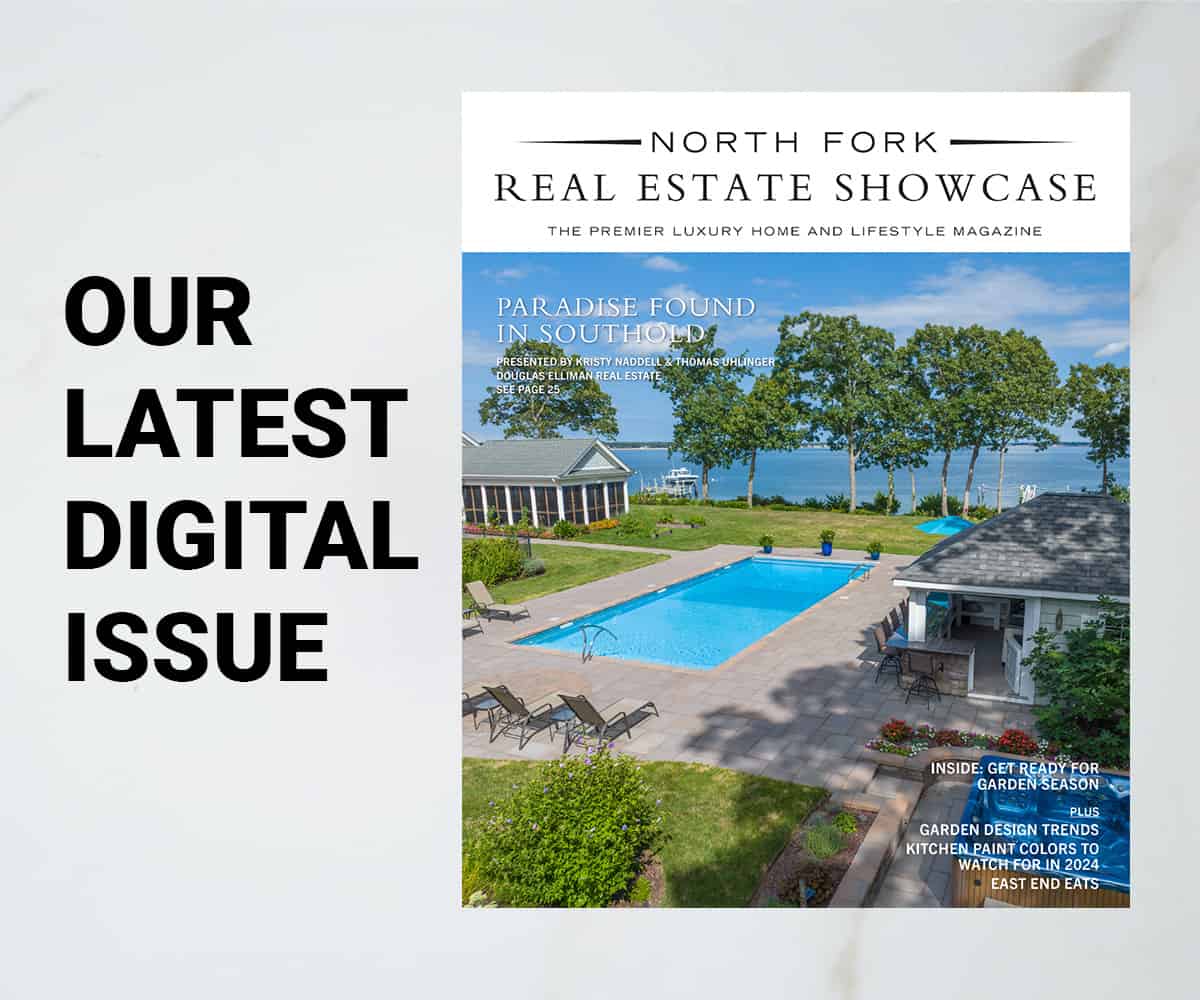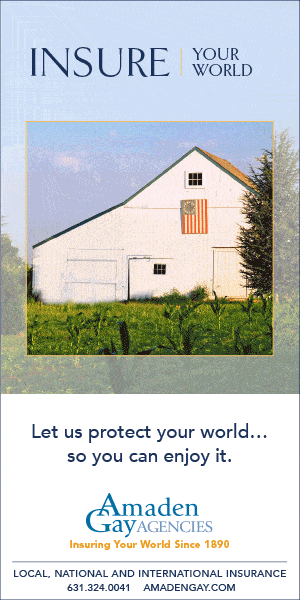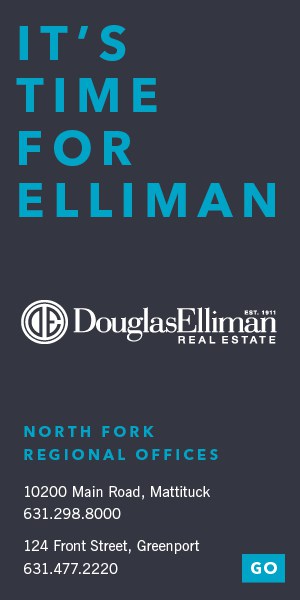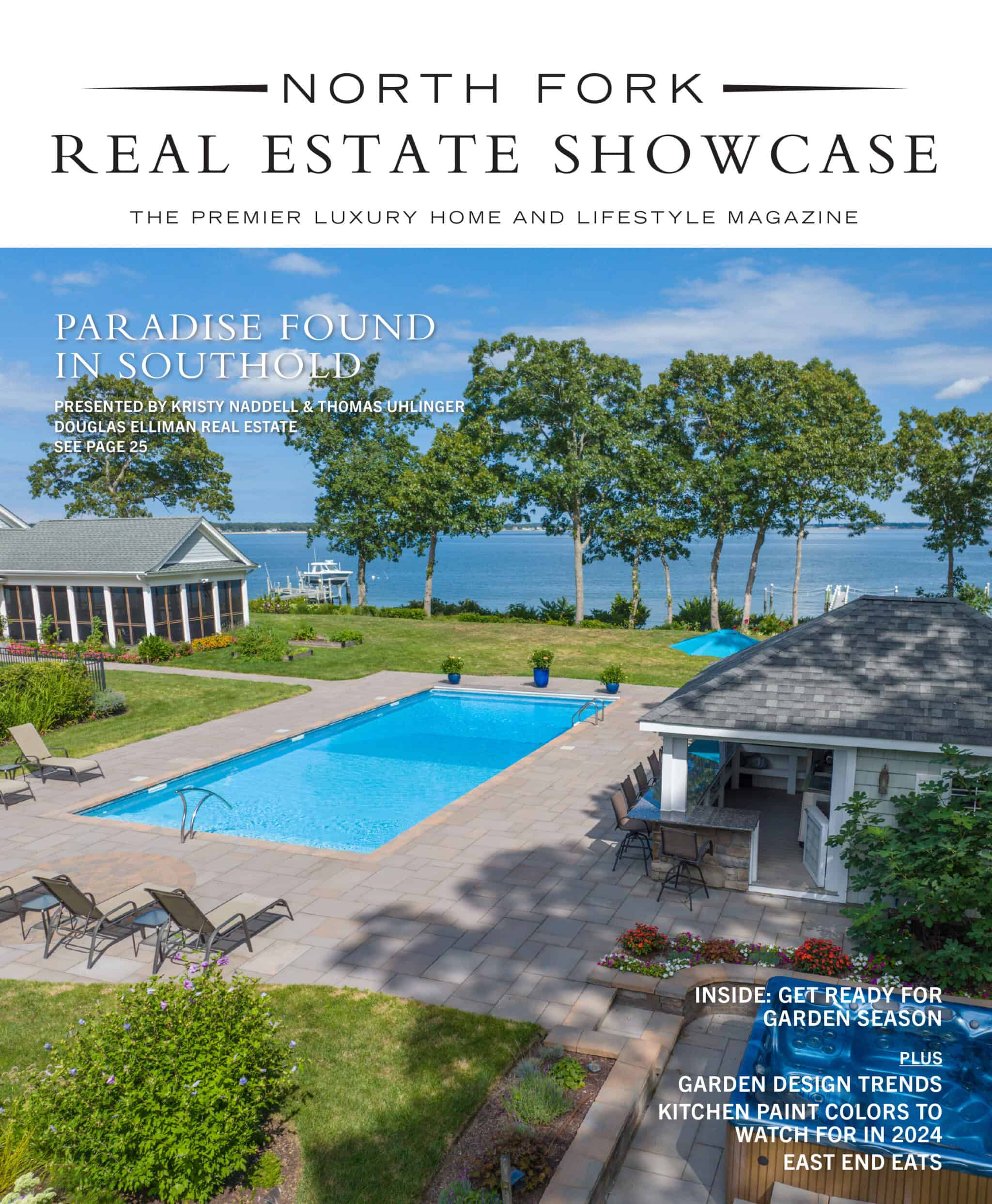Landscape is almost like a muse to North Fork architecture. Long Island Sound, Peconic Bay, Greenport Harbor, and the interconnected waterways speak to the very way of life on the North Fork, as do the acres of undisturbed and preserved land, farms, and open space. Sunsets and natural light is something to marvel at when spending time outdoors. It is the same concept of land and light that has drawn artists of all backgrounds here that also fuels architects’ functional creativity to design homes on the East End. From inspiration to fruition, local architects are sharing what makes North Fork architecture stand out, and what we can look forward to in 2018.
Building on the beauty of the East End, Meryl Kramer Architecture has a design approach that is a clean, modern interpretation of the traditional, shingle farmhouse, something that is one of the best characterizations of the North Fork. “Houses with and without water views utilize large glazed window and door openings that bring the natural beauty of the North Fork into the house,” says owner Meryl Kramer. “Most of our clients want uncluttered interior spaces with clean lines with an open plan. Advances in building science allow these large spaces to be thermally comfortable, sustainably sourced, and energy efficient.”
The notion of inviting the outside in is prevalent in Kramer’s work, as clients have a desire to enjoy the seasonal activities the North Fork offers. Mudrooms, outdoor showers, pool houses, decks, and screened porches are common in many of the firm’s projects. Of a growing trend, Kramer says inverted homes are growing in popularity.

“Inverted homes, with the public spaces the top floor (living room, dining room, kitchen) and the bottom floor reserved for the private spaces (bedrooms) is a trend we are exploring with many clients to maximize their solar exposure and water views,” Kramer explains. “This design concept is not new, having its roots in classical Renaissance architecture.”
Though based in Remsenburg, Peter Podlas works across Long Island to design homes reflective of the client’s vision and the area. When he began his practice in the 1980s, the contemporary flat-roof, white-box house was in style, later shifting into shingle style homes. Today, he notes a transitional style of these otherwise traditional forms that have hints of modern aspects in architecture.
“A traditional white shingle siding house with black frame windows,” Podlas gives as an example. “Black frame windows are hot right now. Most clients still like traditional but there is a growing percentage looking for contrasting materials and colors on the exterior. At the International Builders Show last month, I saw quite a few steam ovens showcased for sous vide cooking, which is popular right now. Also, brushed gold fixtures were unveiled as the latest trend in kitchen and bath fixtures. I’m not a fan.”

Podlas is, however, a fan of reducing our carbon footprint. NetZero energy efficient homes have characteristics like being air-tight, insulated, and energy efficient, which can result in the home creating its own renewable energy, a net zero energy bill, and being carbon free. Something else Podlas’ firm designs for homes are innovative and alternative wastewater treatment systems, something that will prove to be a growing need on the East End.
“Nitrogen pollution from septic systems is the single largest cause of brown tide and other water quality problems,” Podlas explains. “Conventional systems were not designed to remove nitrogen. Everyone comes to the East End to enjoy the beaches, bays, and waterways, so it only makes sense to protect them. As an architectural firm, we decided to make this a part of the services we offer our clients. I believe the septic system is just as important as the foundation.”

Though based on Martha’s Vineyard, Breese Architects works on the North Fork as well, and is in the process of opening a local office. Owner Peter Breese says the area’s style is a little hard to pin down in terms of design.
“There are two basic types of residential design,” Breese shares. “The first is a farmhouse restoration look, but doing it in a sophisticated, clean, pared down effect. The second is the ranch renovation. It’s a midcentury, modern look that is being applied to these kind of very ordinary ranch houses that were done in the 1960s and 1970s. People coming in now are doing a similar effect on the interior by opening up space, with a more interesting kitchen, and up-to-date materials.”

Breese’s signature style is something he feels could work in any location. He shares clients are drawn to his firm’s website where they find projects with a transitional design that is neither overtly modern or super traditional. He calls the style a hybrid of traditional styles and contemporary or modern looks. As for a lasting trend, green building continues to endure.
“The green architecture movement is still an alternative,” Breese says, adding a recent project he worked on is reflective of this style. “It’s a real environmental, green house that was fashioned along the lines of an old mill building, with a loft interior and very simple lines. That’s a very cool project. It’s the kind of work people would gravitate to on the North Fork.”
While it is not exactly new news that the North Fork is a destination for permanent and vacation homes, the slow climb of certain trends is helping to further define the style of these East End homes. Whether it be the growing consciousness of eco-friendly designs to help preserve the landscape that draws so many here, or the shift to transitional styles marrying traditional and contemporary design, the state of architecture is one that excites us for 2018 and years to come.








